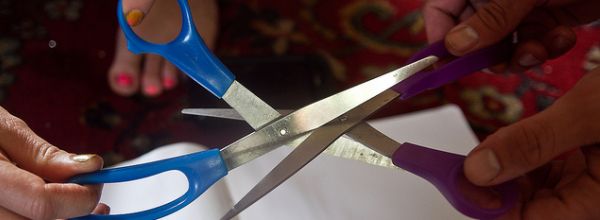Negative staining of proteins is a versatile tool for structural biology. The sample preparation protocol is simple: the sample is embedded in a heavy metal stain that gives rise to increased specimen contrast. Thus, negative staining is a very convenient method to assess sample homogeneity, formation of macromolecular complexes, or quality of protein preparation. Conventional negative staining has been applied to various soluble proteins, but negative staining of membrane proteins remains a daunting task. Can you think of a reason?
Yes, you got it right: membrane proteins have a tendency to aggregate. Here, I will discuss the major pitfalls of performing negative stain of membrane proteins which I learned from my experience on working with G-protein coupled receptors and ion channels, and my supervisor’s suggestions.
- Choice of detergent: The most common detergents reported to be successful for membrane protein purification are DDM (n-Dodecyl ?-D-maltoside) and OG (Octyl ?-D-glucopyranoside). Unlike OG, DDM has the key advantage of low CMC (see point 2 for CMC). However, my supervisor told me he had problems with DDM in some cases like Insulin and ?-opioid receptor. Moreover, empty micelles of DDM detergent alone is often prominent in the background of an image, and can cause image graining; OG leads to less image graining compared to samples treated with DDM or any other detergent.
- CMC: Critical Micelle Concentration refers to the concentration of detergent above which micelles form. Interesting fact: your protein can aggregate below that. It is advisable to stay at a detergent concentration 1-2 times the CMC value. But be careful: raising the detergent concentration much above suggested CMC value may interfere with staining and result in a high amount of detergent micelles in the image background.
- Washing: After applying the sample to your choice of grid (i.e. carbon coated copper), it is advisable to wash the grid with two to three drops of water. This has worked for me many times and improves the background considerably. Buffer solutions can also be used instead of water to wash grids (if protein stability is an issue), but this most often results in higher background. In some cases of protein complexes, you may observe dissociation of complex upon washing.
- Volume: In our lab, we prefer to use only 2 microliters of sample for membrane proteins (in contrast to 3.5 microliters for cytosolic proteins). This is related to the surfactant property of the detergent (remember high school chemistry?—detergents lower the surface tension of water). To ensure that the sample is only deposited on one side of the grid (rather than two), use only the suggested amount of sample.
- Concentration: It works well if the concentration is 0.2 mg/ml. Using a high concentration of sample may be falsely interpreted as an aggregation issue.
- Dilution: Membrane proteins should always be diluted in buffer plus detergent (but remember not to go below CMC).
- Homogeneity: It is often difficult to see homogeneity in a membrane protein negative stain image. A novice may think there is an impurity. It is important to remember the contribution of detergent here: apart from mixed micelles of proteins, we can see the micelle-lipid complex as well as empty micelles of detergent. This makes it much tougher to differentiate between the small membrane proteins (<100 kDa) and empty micelles of DDM (~60 kDa). The problem is compounded if the membrane protein of interest has a roughly spherical shape. In such cases, it is advisable to add Fab (antigen binding fragment of antibody) or any known ligand to the protein sample so that it can be differentiated from empty micelles.
- Glycerol: I remember once my supervisor saw me struggle when the grid stuck to my tweezers. He asked me for the glycerol concentration I used, to which he shouted in awe: “20 % glycerol, my God, too much!” Generally, 5 % glycerol is enough and strikes a good balance between protein stability and this stickiness problem.
In conclusion, negative staining of membrane proteins poses unique challenges. Understanding the chemistry of detergent and the target protein’s behavior in detergent is essential to a perfect image of a membrane protein.
References:
- Ohi, M., Li, Y., Cheng, Y., & Walz, T. (2004). Negative Staining and Image Classification – Powerful Tools in Modern Electron Microscopy. Biological Procedures Online, 6, 23–34.





